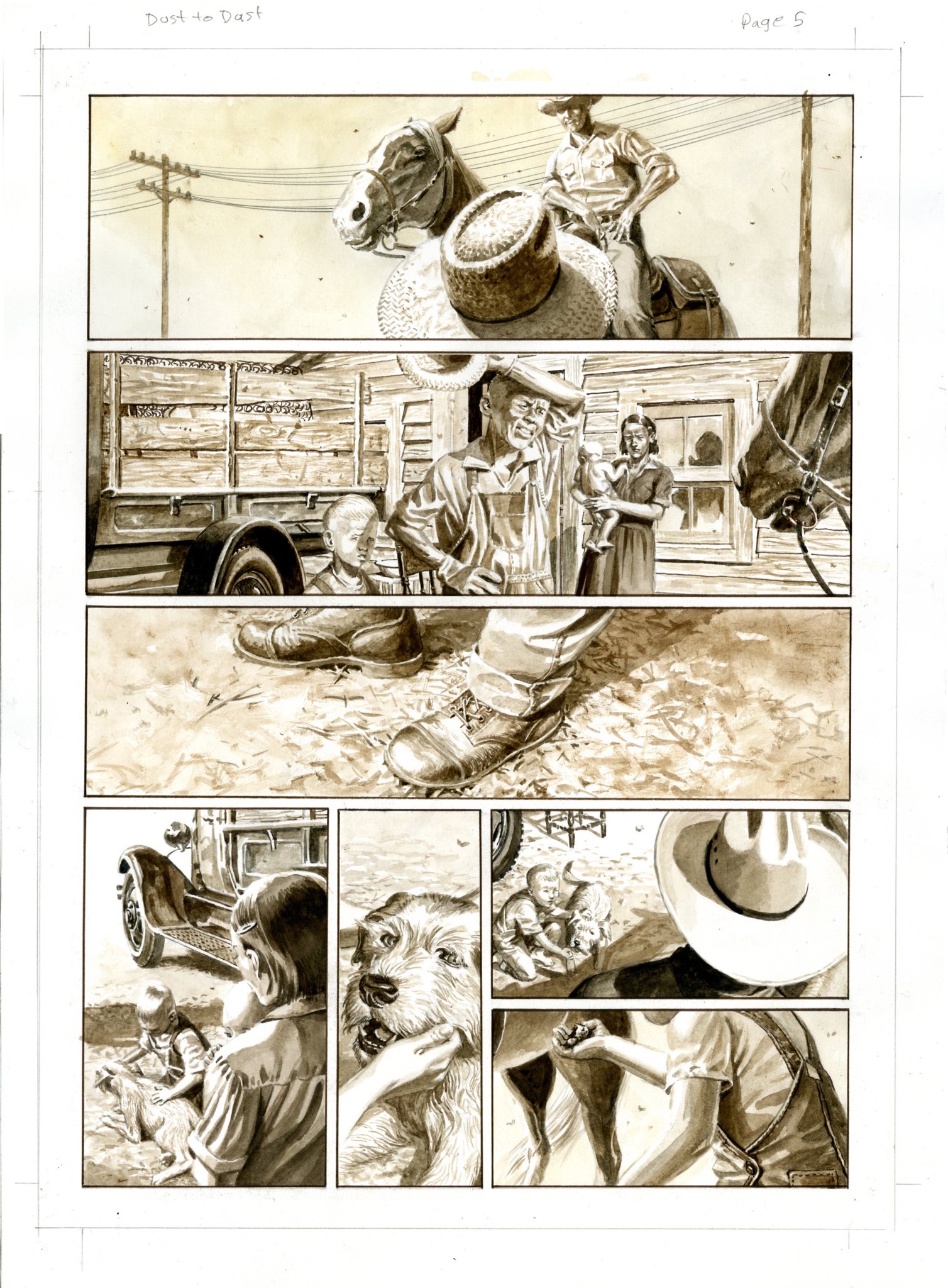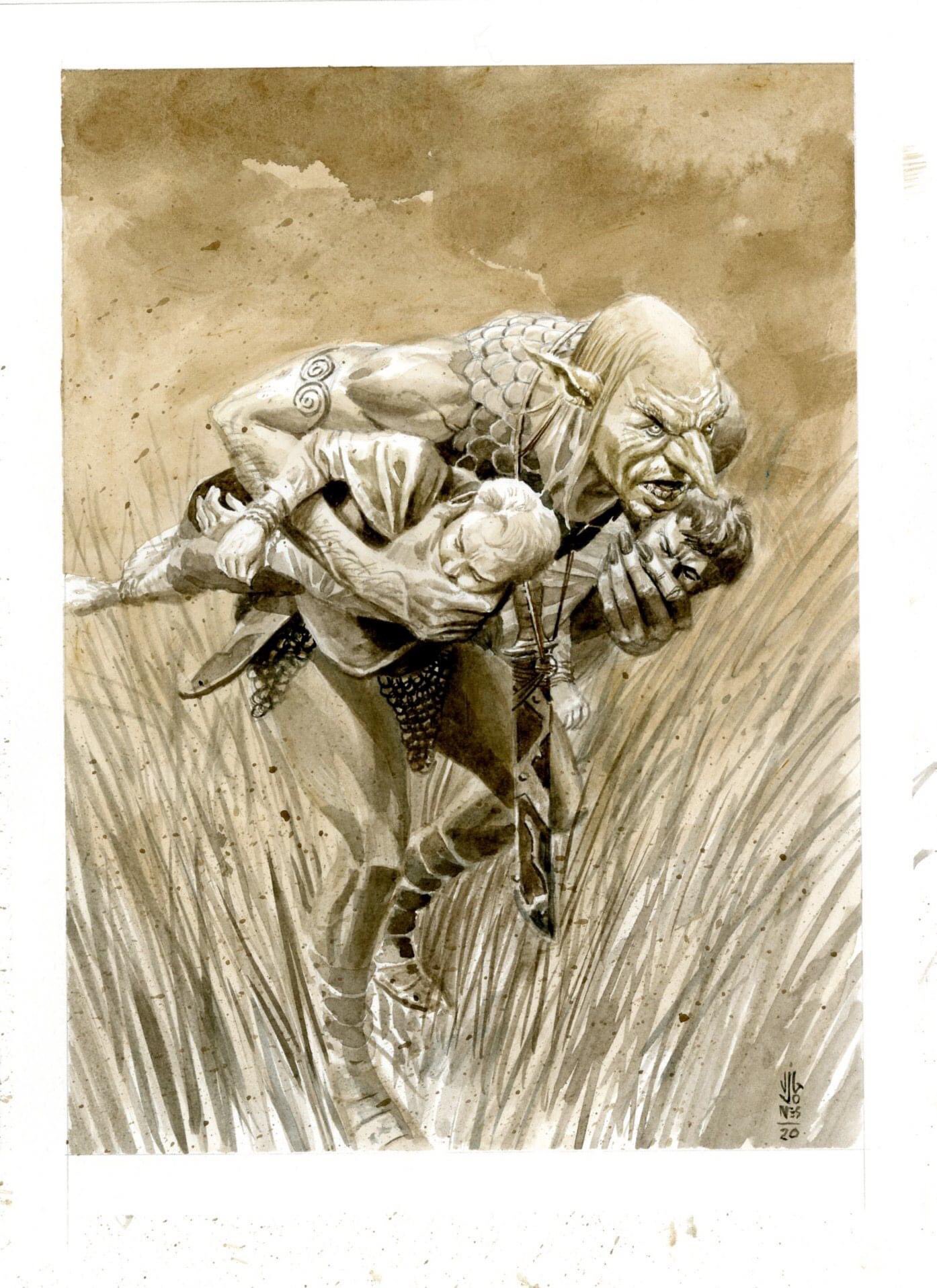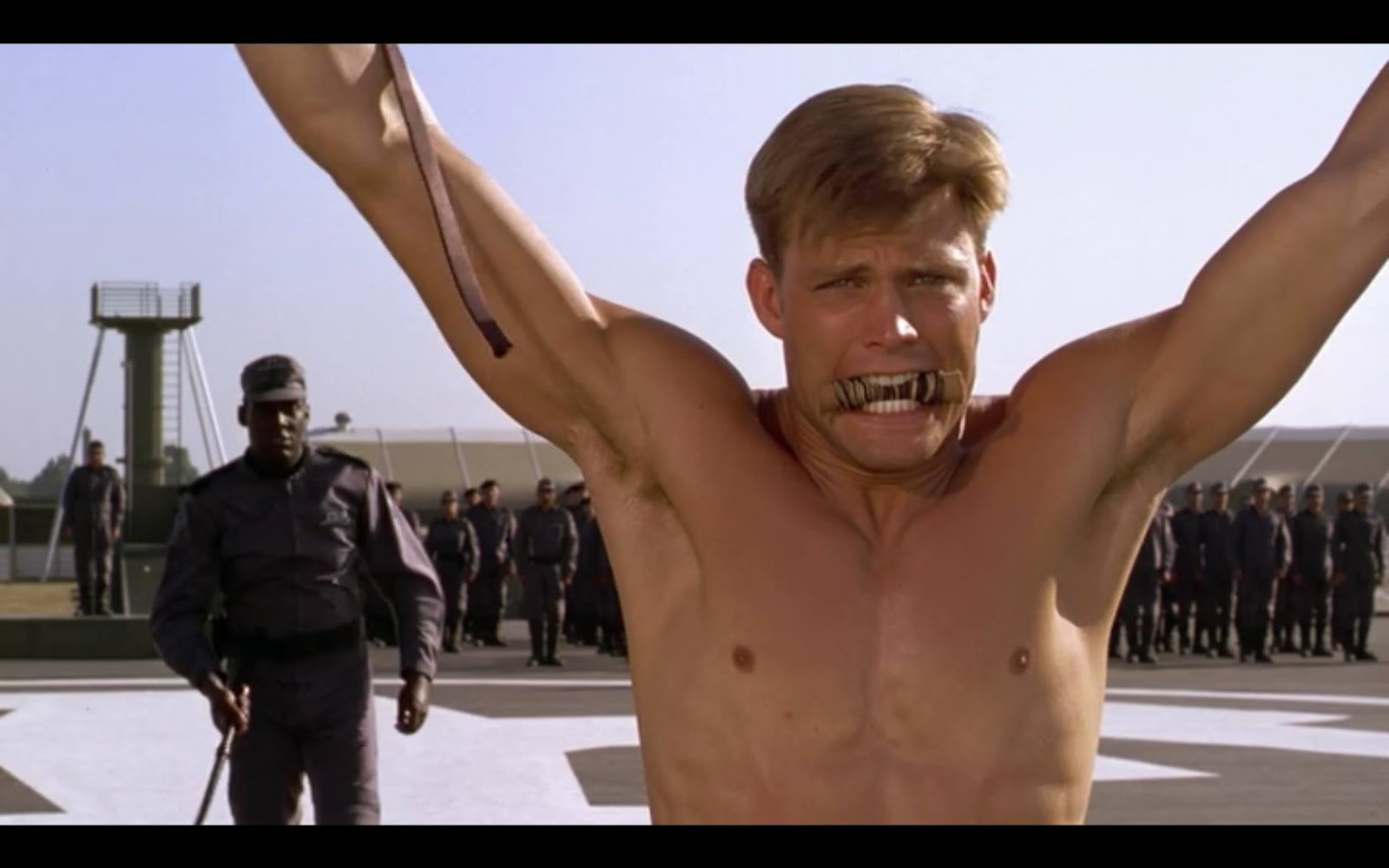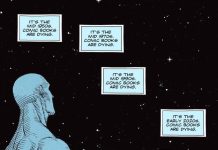§ Nice Art: A couple of years ago I interviewed artist JG Jones as he was preparing for a serious health procedure that prevented him from working for quite a while. There have been ups and downs in his health struggles — and now COVID — but he’s healthy and back at the drawing board as his social media suggests. I particularly love this panel of discovering a Roy G. Krenkel cover because that was me. Jones has been posting pages of his in-progress historical graphic novel:
and more Tolkien art. Grishnakh!
You can catch up with JG on David Macho’s YouTube interview series:
§ Jim McLaughlin presents An oral history of Carol Kalish: the most important comic book figure you’ve never heard of — a seminal figure in the history of the direct market who died suddenly and tragically at a very young age.
Carol Kalish started working at Marvel on March 1, 1982, at the age of 27, in the then-fledgling direct sales department. She died suddenly on September 5, 1991 at age 36, having risen to the level of vice president-new product development. Both triumph and tragedy are wrapped up in that moment on September 5: Kalish was one of the main architects of a burgeoning comic book Direct Market, able to see its glory. But she was also cut down in the flower of youth, with so much work left undone.
I’m old enough to have known Carol — in fact, she mentored me a bit, something I’m so grateful for. We were also herded onto several ’80s “Women in Comics” panels together. I remember coming to NYC and visiting the Marvel offices and Carol taking me out to lunch at what was then the swankiest sushi restaurant I’d ever been to. She was one of the smartest people I ever met, and so passionate about all the things that mattered. I’m so sad she isn’t around to talk about the olden days and the new days — she would have had a lot to say about everything.
Carol’s death also cut short something that might have changed comics:
Kalish was eventually moved into a newly created position, vice president-new product development.
Howell: “During her last year, Carol was promoted from being head of direct sales to being head of specialty projects. She thought that gave her some leeway to turn out stuff that was in comic book form that could reach a larger segment of the reading public. She wanted to start a line of religious comics, and made a deal with the largest chain of religious bookstores in the country. She spoke to the people at various historic Civil War sites and said, ‘If we turn out a comic book version of the famous battle that took place here, would you sell it in your gift shop and keep reordering it?’ Carol also made a deal with — I think — Hallmark to produce greeting cards that were also 8-page comics. Again, it was a great idea that had no in-house support.”
This was at the same time that Ron Perelman was just beginning to leverage Marvel for more of his junk bond empire, though, and I doubt that Carol’s ideas would have gotten too far in that atmosphere. She certainly couldn’t have stopped the Heroes World debacle. I have no doubt, though, that she would have been an interesting counter to DC’s Bob Wayne, the other most powerful figure for the Big Two’s direct market plans. If I were to guess what would have happened if Carol had lived, I would imagine she would have left Marvel but probably ended up at Dark Horse, or started her own publishing company and who knows how that would have been gone. She would have been a difference maker though, for sure.
The piece on Kalish got shared on Twitter a zillion times, including this representative comment:
I only learned Carol Kalish’s name a few years ago and it hit me like a lightning bolt. Imagine finding out there was a secret genius at Marvel who was instrumental in the birth of comic shops as we know them, and you’ve never heard of her.
Now imagine if she hadn’t died at 36. https://t.co/yoN33Lh3XA
— Amy Dallen (@enthusiamy) July 8, 2020
For those of us who knew Carol, of course, it’s hard to imagine her being a secret to comics history….but history is littered with forgotten women, and comics history incredibly so. I’ve said this before many times but why has no one written about Dorothy Woolfolk, or Helen Meyer, the most successful US comics publisher of all time? I’ve said it so many times that maybe I’ll have to do it myself.
Oh yeah, one other thing, back in the early ’90s there was a “Comics Power list” that was all men and when I objected, the list maker protested that “I would have put Carol Kalish on it if she were alive.” This was part of my inspiration for Friends of Lulu. How many women are on the current comics power list? Given the rise of kidlit/YA comics publishing, a lot more.
Dear baby comics writers, pic.twitter.com/JifqwKxAAh
— tom fowler (@tomfowlerbug) June 26, 2020
§ This is old, but click on the link for a lively Twitter discussion of panel placement.
§ Michael Dean at TCJ followed up on further allegations against former CBLDF head Charles Brownstein and it’s very painful reading. How the CBLDF recovers from this level of mismanagement (or if they should) is hard to see.
TCJ first approached Allott in 2018 as part of an ongoing profile of how the CBLDF is perceived by the current generation, how it has evolved and how it has failed to evolve. The Fund had just become embroiled in controversy after declining to extend its First Amendment mandate to defend an alleged sexual harassment victim against a civil suit by her alleged harasser, cartoonist/publisher Cody Pickrodt. (The suit and counter-suit were settled out of court last month.) Many posters on the web condemned the organization’s stance, especially in light of the earlier sexual harassment case against its own executive director, Charles Brownstein. TCJ became suspicious of the circumstances surrounding Allott’s 2010 departure from CBLDF only six months into her three-year contract and emailed her some questions. Allott, however, had been required by CBLDF to sign a Non Disclosure Agreement, which prevented her from talking to the press about her experiences with the organization. With Brownstein newly ousted, Allott approached current CBLDF President Christine Merkler, requesting to be released from her NDA and notified TCJ that she might finally be able to answer its questions. Merkler quickly granted the request and Allott is now able to tell her story of convention nights in which she was repeatedly forced to share a hotel room with Brownstein.
§ David Harper looks at the Year So Far in Comics Retail (paywall) and it’s mixed, of course.
Big Bang Comics’ Bruno Batista simply described the year as “bad” despite high hopes for the year, while Patrick Brower of Challengers Comics + Conversation shared that his shop with partner W. Dal Bush was down “over $72,000 versus the first six months of 2019,” even resulting in the closure of the shop’s second location. Brower added that even June – a month that came after the return of new comics and in-store customers – was down a few thousand dollars from the “catastrophically bad” June of 2019, which was their “worst June in over five years…until now.” Not ideal. If that was the only version of the story, that would look rather grim – and it is still far less than ideal – but as I said, results were varied. Comikaza’s Jacob Sareli said his shop in Tel Aviv was down in June relative to 2019, but with single issues starting up again, he shared the month “exceeded our expectations.” Steve Anderson of Maryland/Virginia’s Third Eye Comics has “seen business return strongly,” post shutdown, while Ralph DiBernardo of Jetpack Comics in Rochester, New Hampshire is actually up on the year, albeit with a commensurate increase in expenses. Edmonton’s Variant Edition Comics has seen a decrease in revenue but an even more significant drop-off in spending, resulting in greater profits thanks to a more focused line of graphic novels and single issues, per its co-owner Brandon Schatz.
Returnability is named as a bright spot but also…readers’ enthusiasm to read comics! Who knew!
“The schedule of titles was drastically reduced, and I think that’s really actually helping boost sales on all titles,” Anderson said. That’s something Brower echoed when he told me, “the reduced output of the industry as a whole is making selling books a little easier right now.”
It also seems that DC’s move to supply new comics when no one else did is paying off with renewed enthusiasm for the line.
§ Comic-Con@Home will announce its programming schedule the old-fashioned way! One day at a time.
We’re two weeks away from the debut of Comic-Con@Home 2020! And even though this is a very different year, we’re happy to announce we’ll be sticking with the Comic-Con tradition of announcing our panel schedule two weeks in advance. Over the next five days, we’ll reveal our daily online programming line-up for Wednesday, Thursday, Friday, Saturday, and Sunday, July 22–26, with complete programming descriptions. The panels themselves will not be available until those dates, but you’ll be able to read all about them and build your own schedule of programs you want to watch during Comic-Con@Home 2020!
§ My quarantine project has been Comic Beat Insider, a weekly collaboration with podcaster Jimmy Aquino where we get an array of guests to talk about comics, but also movies. We’ve been revisiting some of our beloved classics, like The Crow and Evil Dead but a few weeks ago I insisted on Starship Troopers. Well it seems that David Roth at The New Yorker has also caught on to the timeless relevance of this masterpiece with How “Starship Troopers” Aligns with Our Moment of American Defeat:
The Federation is, to all appearances, losing the permanent war, and much of “Starship Troopers” is given over to watching the teens as they fight and die for the cause. One of Verhoeven’s main goals is to depict a society whose fixation on force has left it preening, idiotic, and paradoxically weak. This state manifests as endless columns of cultishly revered and supremely well-equipped violence workers who know how to do only one thing, and a culture that exists exclusively to celebrate their efforts. If it’s unsettling to recognize similarities between the crumbling futures of “RoboCop” and “Total Recall” and our own cultural moment, it’s terrifying how familiar the thudding martial beats of “Starship Troopers” are to contemporary ears. It’s a comedy, of course.
In a Twitter thread, there are even more tributes to this film. Honestly, I never get tired of Starship Troopers, and now it’s on Netflix!












I remember the hatchet job that Gary Groth wrote about Kalish after her death. It was not well received.
Wish Jim Shooter had been quoted in that article. He has blogged about his disagreements with Kalish about Marvel’s direction. She thought Marvel should give up on newsstands and focus entirely on the direct market, while Shooter wanted to hold on to newsstands (to the extent Marvel could). He felt that the DM was only serving people who were already fans, while newsstands were where new readers discovered comics.
Comments are closed.